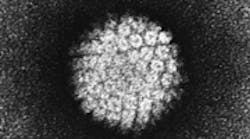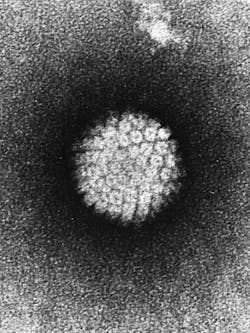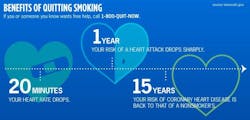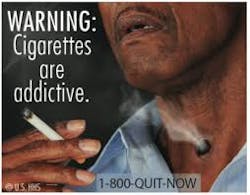April is Oral Cancer Awareness Month! The Oral Cancer Foundation invites you to join their national screening campaign to end oral cancer. Oral cancer awareness in the general population is low, and approximately 43,250 people in the U.S. will be newly diagnosed with oral cancer this year. (1) While smoking and tobacco use are still major risk factors, the fastest growing segment of oral cancer patients is young, healthy, nonsmoking individuals due oral cancer’s connection to the human papilloma virus (HPV). For more information on the HPV virus and oral cancer, visit the Oral Cancer Foundation’s website devoted to the topic.
One billion deaths from smoking and other forms of tobacco use are expected by 2099 if smoking cessation interventions are not successful. (2) Some researchers and scientists are advocating for the legal sale of tobacco to be phased out entirely by 2040. While tobacco-use rates are generally declining, they are expected to increase in some African and Middle Eastern countries. (3) More stringent laws and increased taxes need to be implemented in order to be successful in achieving the goal of phasing out tobacco use by 2040, according to the experts. (3)
READ MORE | Tobacco use: What is dokha?
Interventions for smoking cessation are readily available. However, they are underutilized due to lack of clinician training and organizational support. (4) However, it appears that smoking cessation intervention in primary care is increasing. (5) Recent surveys of smokers and physicians show that about 90% of patients are asked about smoking status and advised to quit. (5) The goal of the intervention must be complete smoking cessation, as reduction of smoking does not confer any health benefits to the individual smoker. (4)
Graphic images on cigarette packs may have substantial effect the brains of smokers. A small study used magnetic resonance imaging (MRI) to monitor the brains of 19 smokers as they looked at 24 different health warning images. (6) They used photos that triggered emotional content of varying degrees. The images with more emotional content activated greater stimulation in parts of the brain that register emotions like fear, and helped reduce the urge to smoke. (6)
RESOURCES | Tobacco cessation posters for dental hygienists
The American Cancer Society and World Lung Foundation have revealed the fifth edition of The Tobacco Atlas website and its companion mobile app at the 16th World Conference on Tobacco or Health. The Atlas vividly describes the extent of the tobacco epidemic and the damaging influence of tobacco on health, poverty, social justice, and the environment. It discusses the evolution of tobacco epidemic control and the newest products and strategies being utilized by the tobacco industry to shield their revenues and interfere with tobacco control. Visit the website to read sections of the Atlas or view it in its entirety.
It is not only smokers that are affected by smoke, but those around them as well. While secondhand smoke exposure in the United States dropped by half between 1999–2000 and 2011–2012, one in four nonsmokers (58 million people) are still exposed to secondhand smoke. (7) In February, the Centers for Disease Control and Prevention (CDC) hosted a Facebook chat on the dangers of secondhand smoke, led by Brian King, senior scientific advisor for epidemiology in CDC’s Office on Smoking and Health. One participant asked if e-cigarettes produced secondhand smoke. They produce secondhand aerosol, not just harmless water vapor, and the aerosol is not as safe as clean air. (8) You can read the entire chat on the Facebook page, and view the resources there.
And last, but not least, I would like to bring your attention to a new technology to help in the early diagnosis and intervention of oral cancer. Vigilant Biosciences’ OncAlert Oral Cancer CD44 + Total Protein Lab Test is an accurate, effective and affordable, quantitative risk assessment solution for clinicians involved in the diagnosis and treatment of oral cancer. According to the manufacturer, the test identifies specific protein markers connected to early stage cancers, even before observation of visual or physical symptoms. For more information, visit the website.
References
1. Oral, Head & Neck Cancer Awareness Month. The Oral Cancer Foundation website. http://oralcancer.org/events/oral-cancer-awareness-month.php. Accessed March 31, 2015.
2. The Lancet. "Experts call for a tobaccofree world by 2040." ScienceDaily. www.sciencedaily.com/releases/2015/03/150312202209.htm. Published March 12, 2015.
3. Verguet S, Gauvreau CL, Sujata Mishra, et al. The consequences of tobacco tax on household health and finances in rich and poor smokers in China: an extended cost-effective analysis. Lancet Glob Health. 2015;3:e206-e216. doi: 10.1016/S2214-109X(15)70095-1.
4. Anczak JD, Nogler RA 2nd. Tobacco cessation in primary care: Maximizing intervention strategies. Clin Med Res. 2003;1:201-16.
5. Kushnir V, Cunningham JA. Assessing effective smoking cessation intervention in primary care [published online ahead of print March 14, 2015]. Prev Med Rep. 2015. doi: 10.1016/j.pmedr.2015.03.001.
6. Wang AL, Lowen SB, Romer D, Giorno M, Langleben DD. Emotional reaction facilitates the brain and behavioural impact of graphic cigarette warning labels in smokers [published online ahead of print January 6, 2015]. Tob Control. 2015. doi:10.1136/tobaccocontrol-2014-051993.
7. 58 million nonsmokers in US are still exposed to secondhand smoke. Centers for Disease Control and Prevention website. http://www.cdc.gov/media/releases/2015/p0203-secondhand-smoke.html. Accessed March 31, 2015.
8. University of Pennsylvania Annenberg School for Communication. Ecigarette advertising makes one crave . . . tobacco? ScienceDaily. www.sciencedaily.com/releases/2015/03/150312173804.htm. Published March 12, 2015. Accessed March 31, 2015.










